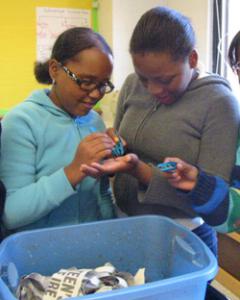Kids for Compost!
Help us turn our school lunch waste into soil we can use! With compost bins and supplies, we will reduce our environmental impact and learn about science.
About the project
This project helps us reduce our environmental impacts and create a fun learning opportunity for students. These three bins will provide us with the capability to compost around 2000 pounds each school year. Food waste from our school can be used to create a healthy soil amendment for our school grounds instead of sending it to a landfill. While one benefit is turning waste into a resource, this project can also give students a hands-on learning experience. Students will collect data about the composting process (temperature, weights of inputs and outputs) and report this data to the school. Students will also study the compost bins as ecosystems, observing food webs, classifying organisms, and describing change.
The Steps
We have already secured permission to compost on school grounds in a small courtyard and to use the finished product on school grounds. We will work with the custodial staff to collect yard waste and with the lunch staff to collect food waste. Each week, as composting spaces permits, the Go Green club will collect lunch waste, process it, and compost it. We already have the tubs for collecting and the scales for weighing. We expect to start with yard waste and some food composting this fall, but will compost the bulk from the cafeteria in spring 2010. After producing humus (6-12 week process), we will add it to the soil in existing plantings on school grounds.
Why we‘re doing it
Schools use lots of stuff to make a great education happen. Unfortunately, this can mean that a lot of material is sent to a landfill. At our K-8 public school in the Bronx, paper was one of our major trash items. We successfully started a classroom recycling initiative to improve. Currently, food waste from the school cafeteria is another major component in our trashcans. We already compost a limited amount with our six worm bins, but there is more food than we can handle. Lots of rinds, peels, apple cores, and discarded vegetables are thus sent to landfills. Food waste makes up over 15% of the New York City waste stream. Another 5% of what is sent to landfills is yard waste, which is also generated on our school grounds. We are squandering the opportunity to make our waste into a resource; outdoor composting could change that. While the process of outdoor composting does not require a bin, any composting in our public area needs to be rodent-proof and thus concealed in a more expensive bin.

